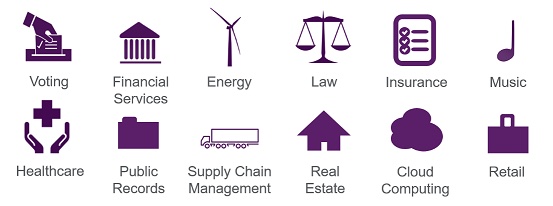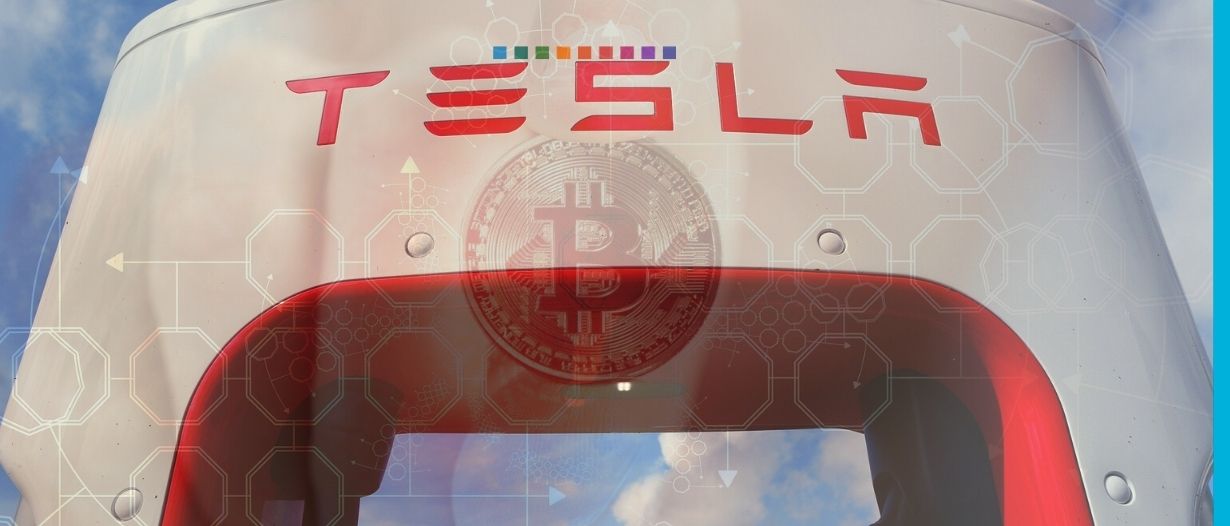Tesla’s announcement that it had bought $1.5 billion worth of Bitcoin in January has sent the crypto world into a frenzy, rocketing Bitcoin’s price to an all-time high of nearly $50,000. This spike has put the cryptocurrency back in the headlines with experts on all sides discussing the surprise announcement by Tesla and its visionary CEO, Elon Musk. Is this new price a reflection of Bitcoin’s intrinsic value or is it an amplified version of the bubble we experienced in 2018? There is lots of noise and excitement around both sides of the debate.
Unfortunately, all this noise is distracting from a more important topic; a topic that can have a real and lasting impact on millions of micro, small and medium enterprises (MSMEs) around the world. This topic is the impact that Bitcoin’s underlying technology, distributed ledger technology (DLT), can have on international trade. DLT’s substantial progress in this field has been vastly overshadowed by the hype surrounding the ferocious ebbing and flowing of Bitcoin’s market cap. We need to stop talking about Musk’s investment in BTC and start talking about breakthroughs in DLT in trade.
DLT is not Bitcoin
With all the hype surrounding the crypto-verse in recent years, many people have come to equate terms like DLT and blockchain with Bitcoin itself. While Bitcoin is facilitated by blockchain, a type of DLT, there is so much more to the underlying technology than just cryptocurrency.
We can think of DLT a little bit like an engine. An engine is a brilliant piece of innovation that powers cars. All around the globe, carmakers have been tweaking and revising engines to try and make their cars the most efficient on the market. The same happens with DLT and cryptocurrency. Innovators around the world are tweaking the design of the underlying technology to try and create the most efficient cryptocurrency on the market.
But the power of engines does not stop at cars. Engines also power countless other invaluable tools like freighters, submarines, jetliners, and spacecraft. If we restrict ourselves to only honing in on one application of a powerful technology, we lose the ability to see its entire gamut of potential. DLT has many real and viable applications beyond cryptocurrencies and even beyond finance itself.
DLT has huge potential in trade and supply chains
In a 2017 report, the World Bank highlighted a myriad of potential DLT applications across a wide assortment of industries and sectors. Some of these include electronic medical records, tracking the delivery of vaccinations in humanitarian aid work, recording the provenance of cash crops, establishing land registries, and facilitating supply chain management.
For many of these potential applications, DLT provides a modern and digital means of overcoming a lack of trust between parties. With a DLT based provenance tracking system, one can see every step that a coffee bean takes from the farm to the coffee machine, providing confidence that it truly stands up to the fair trade label. Applications like this are one of the many reasons why DLT is poised to have a considerable impact on the entire international trade landscape.

DLT in International Trade
International trade, and particularly trade finance, has been slow to adapt to the new era of technological development that has swept the globe in the past 30 years. Many of the processes used today would still seem familiar to sixteenth century Venitian merchants. These cumbersome and outdated processes are a direct result of the necessary goal of enabling participants to trust the outcome of transactions without needing, as many inherently do not, to trust their counterparties. Pre-DLT digital technology simply did not suffice in achieving this trust due to the ease of falsifying digital records and documents. DLT, however, promises to achieve this trust by providing all permissioned parties access to a single distributed ledger – a single version of the truth.
To those operating in the industry, the promise of DLT is no secret. In their publication Blockchain & DLT in Trade: Where do we stand? World Trade Organization and Trade Finance Global profiled 44 companies, consortia, and projects that are working towards implementing DLT-based solutions in the trade industry. The applications of these projects include supply chain finance, trade finance, know your customer, insurance, documentation, shipping & logistics, and marketplaces.
Over the past year, many of these projects have progressed from the pilot stage to being live and operational platforms. This means that much of the excitement for the industry is just beginning.
As these projects begin to scale up, potential clients will be evaluating their merit and value propositions. In order to do so effectively, key decision-makers need to understand that DLT does not mean Bitcoin. Only then will firms be able to base their decision on the true merits of the revolutionary technology, rather than misguided perceptions fueled by the negative stigmas surrounding Bitcoin itself.
Forget SpaceX and Starlink, let’s talk about now
It is difficult to dispute the contribution that Elon Musk has made in shaping the vision of the future. Paypal, Tesla, SpaceX, and Starlink are but a few of the visionary and often wildly futuristic ventures that have made Musk the world’s wealthiest person. It is no wonder then that when he speaks the world listens. This is a major reason why there is so much talk about Tesla’s purchase of Bitcoin. While the debate rages on about the future of the cryptocurrency, there is no doubt that it has made a splash in the world over the last half-decade. Bitcoin, and its underlying distributed ledger technology, are elegant and innovative creations that have had immense implications. But it is time to separate the two. DLT can be the engine that powers the Tesla Model 3, but with the right people problem solving together, it can also be the engine that powers the Falcon 9.
Let’s not make the mistake of restricting our vision of what DLT is capable of to a single use-case.





























